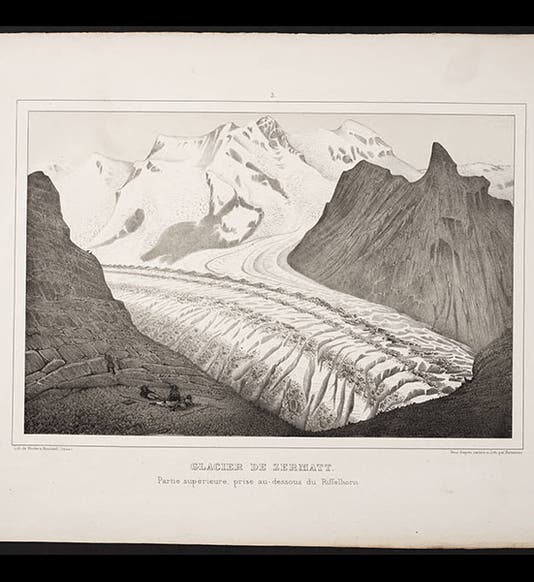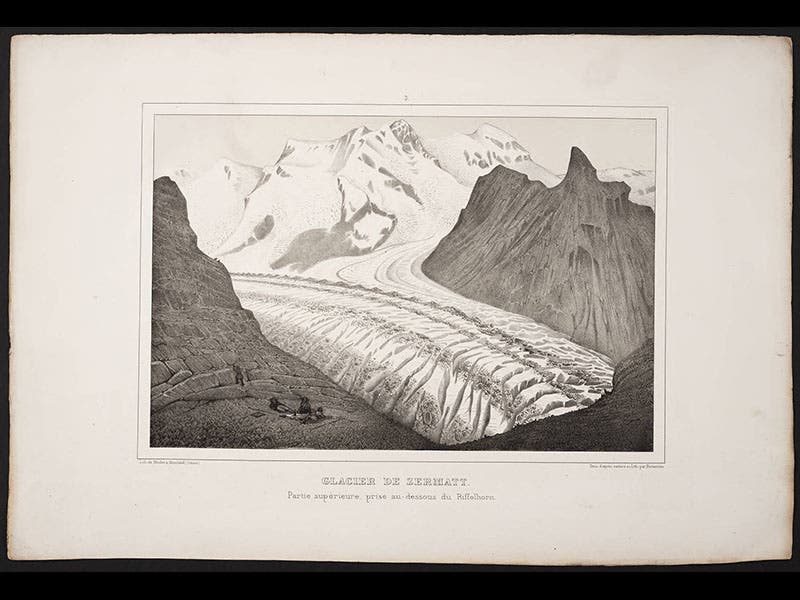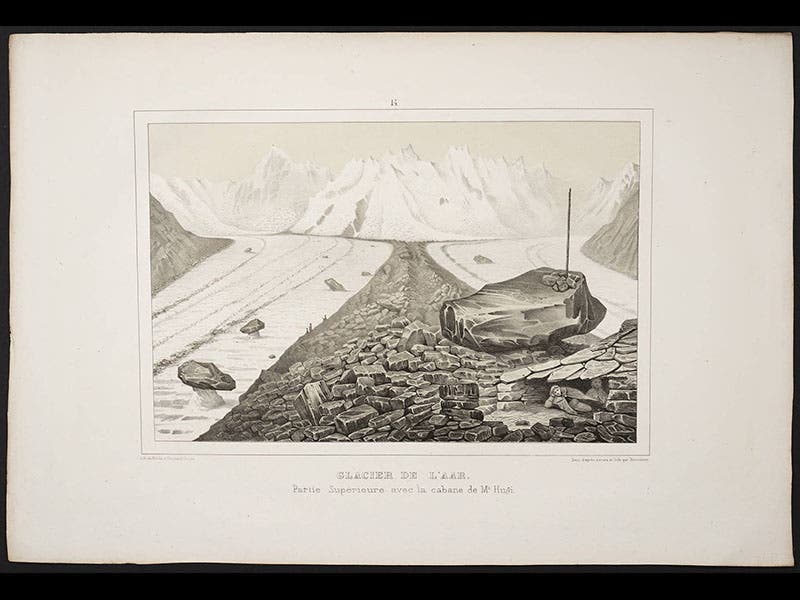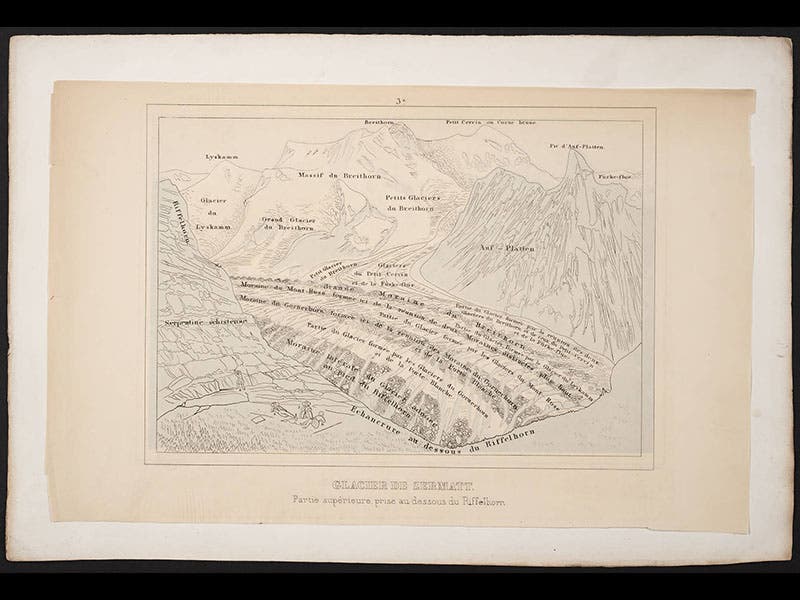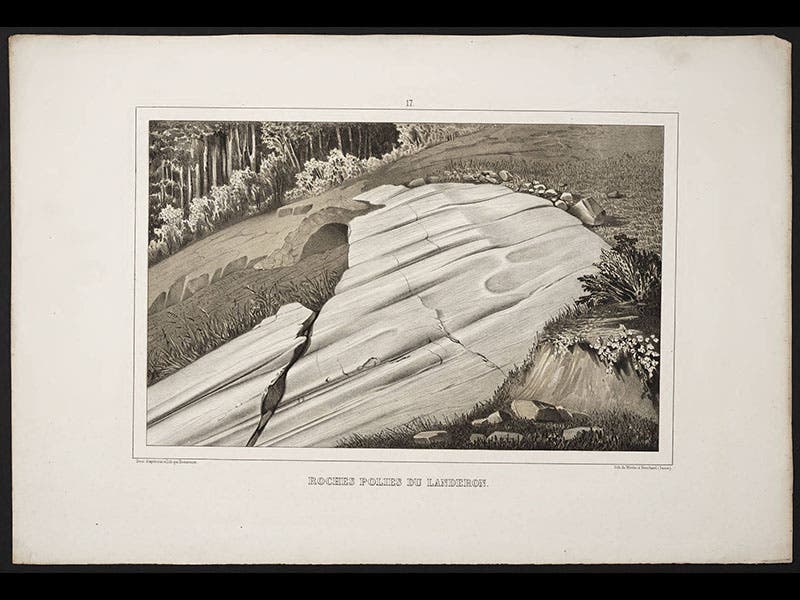Scientist of the Day - Louis Agassiz
Louis Agassiz, a Swiss naturalist, was born May 28, 1807. In 1837, Agassiz first suggested to a scientific audience that Europe had once been covered by massive ice sheets, and in 1840 he published his Études sur les glaciers, a detailed and illustrated account of modern glaciers in Switzerland. In revealing the characteristic signs of glacial activity--striated rocks, lateral and terminal moraines, erratic boulders--he made it possible for geologists in other areas, such as Scotland or Wisconsin, to recognize similar markings and realize that their countries had once experienced extensive glacial activity. His book was accompanied by an Atlas with a number of dramatic lithographs of Alpine glaciers, such as the Zermat glacier (see first image above) and the Finsteraar glacier (second image). Rather than clutter the images with labels, Agassiz instead used tissue paper overlays with all the names and terms printed on the tissue (third image, the overlay for the Zermat glacier). The plates include many amusing vignettes that invite a closer look; our fourth image shows a detail of the first image, where you may see picnickers enjoying an afternoon near the ice. The fifth image shows a striated rock, a sure sign that a glacier passed over at some time in the past, and the last depicts the Viesch glacier with a prominent terminal moraine, another clear indicator of the former presence of a glacier. We displayed Agassiz's Études sur les glaciers in our 2008 exhibition, Ice: A Victorian Romance, along with the original 1837 paper in which Agassiz first announced his startling thesis. Dr. William B. Ashworth, Jr., Consultant for the History of Science, Linda Hall Library and Associate Professor, Department of History, University of Missouri-Kansas City. Comments or corrections are welcome; please direct to ashworthw@umkc.edu.

